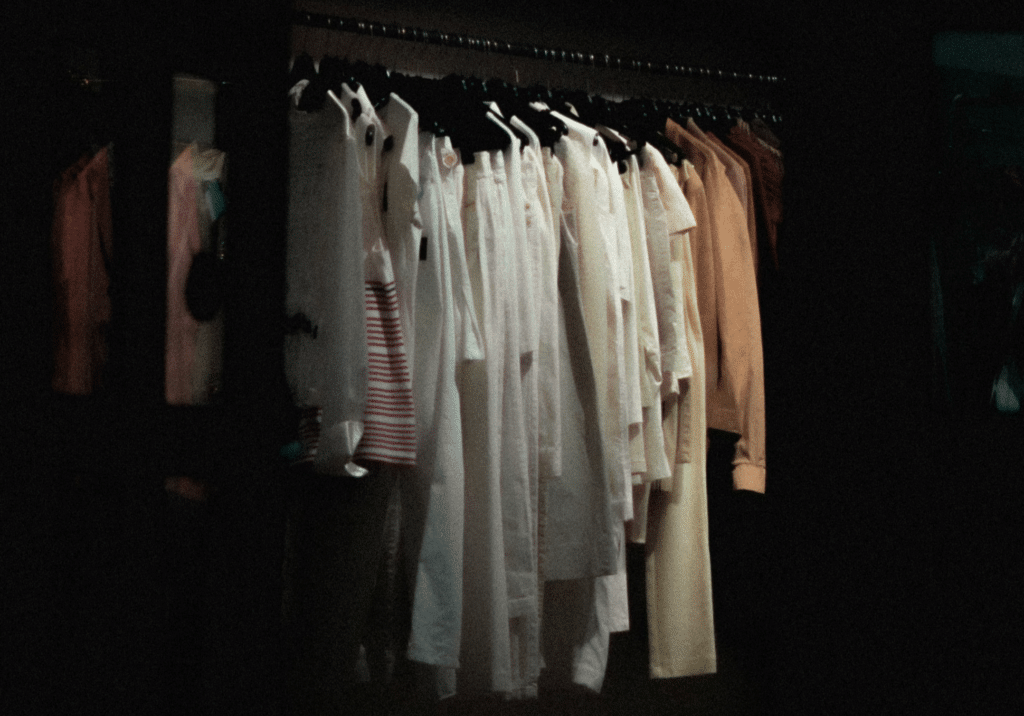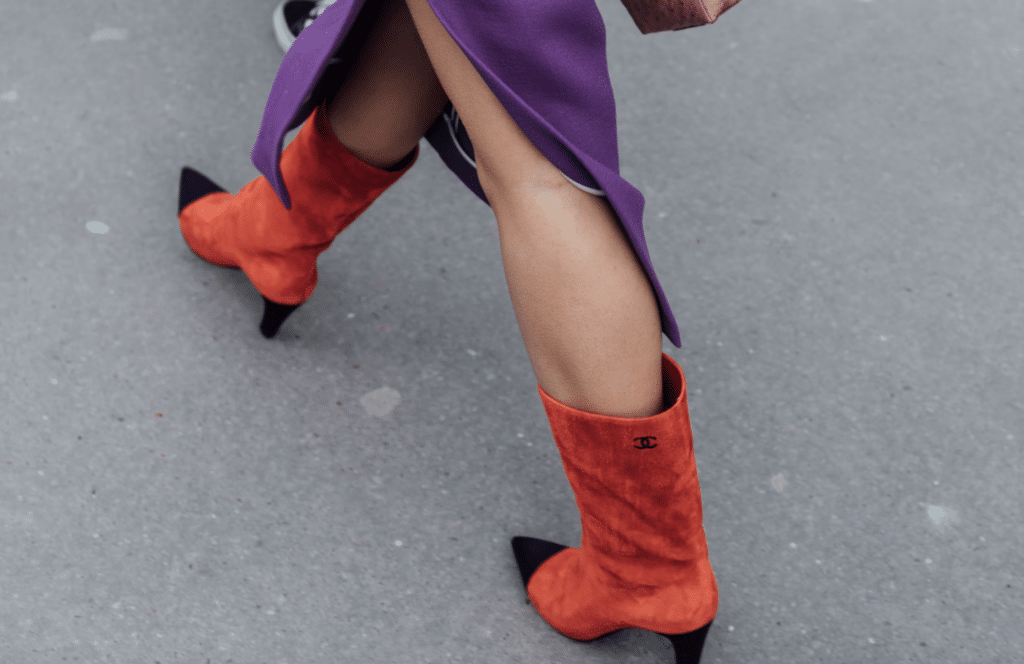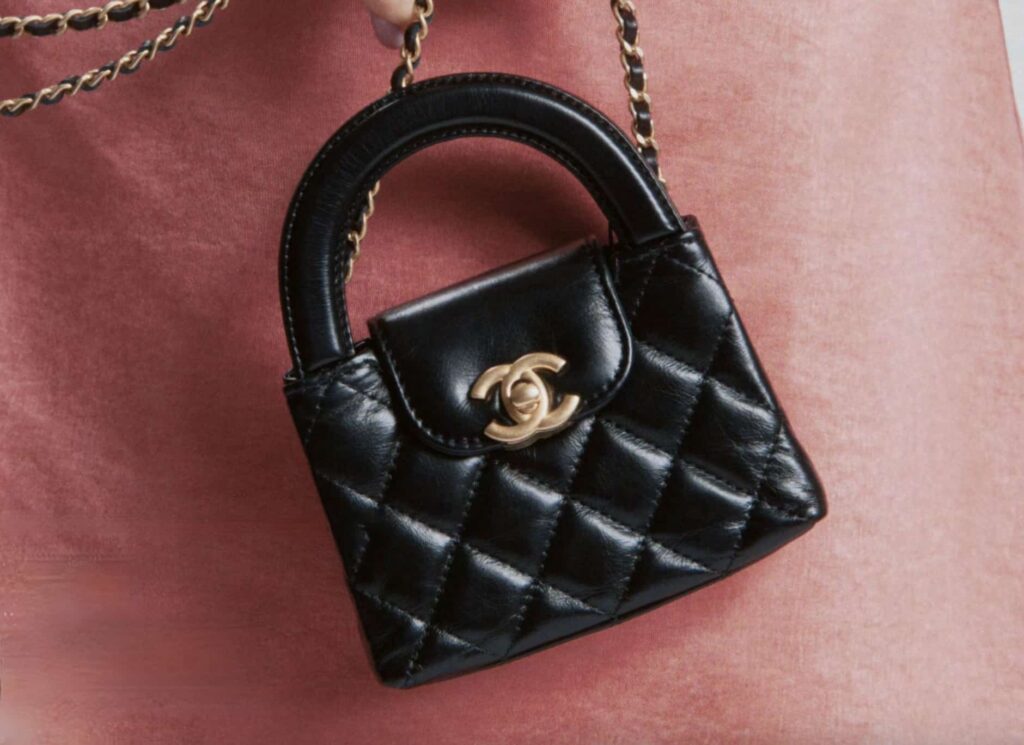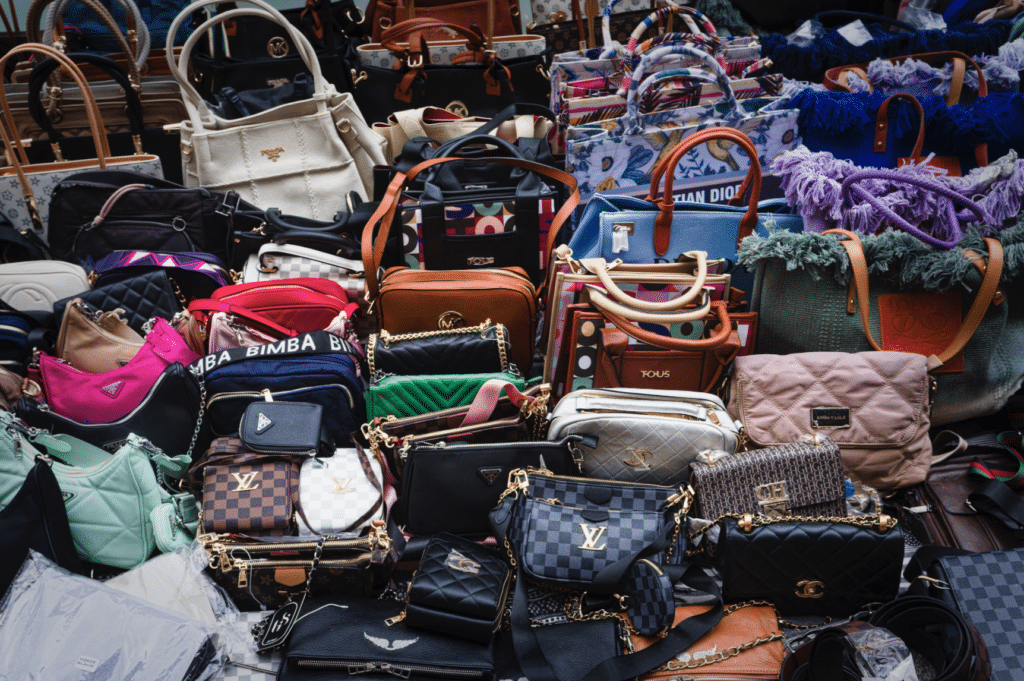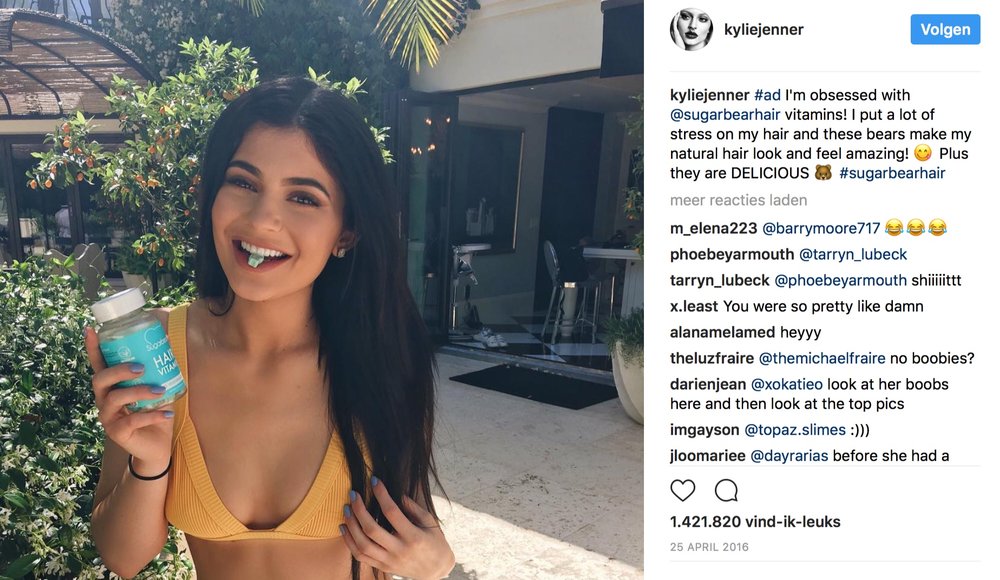
image: Kylie Jenner
Federal law has long required that certain content be labeled. With that in mind, the Federal Trade Commission (“FTC”) has been issuing messages for several years now that indicate that it is, in fact, paying attention. In April 2017, it sent over 90 letters to brands, celebrities, and influencers from J.Lo., Scott Disick, Emily Ratajkowski, (the business partner of) Chiara Ferragni, and Victoria Beckham to Chanel, adidas, Yves Saint Laurent, and Puma to educate them as to the labeling requirements for sponsored posts. It followed up a few months later. It also stated that it would begin cracking down on media companies.
But with increasingly frequent warning messages and a lack of actual enforcement action, the question remains: Why isn’t the FTC really taking action? Chances are: The federal entity is understaffed and tasked with other more pressing matters, such as allegedly anticompetitive mergers of multi-billion dollar companies and endorsements involving pharmaceuticals. It is also, of course, balancing the need to educate brands and influencers about its guidelines with to punish them for running afoul.
The FTC’s Guidelines
For the uninitiated, the FTC is the government agency that is tasked with promoting consumer protection, and eliminating and preventing anticompetitive business practices. In this role, the FTC issues guidelines (which are legally binding) that govern “Endorsements and Testimonials in Advertising” and “DotCome Disclosures,” among other things. According to the FTC’s Guides Concerning the Use of Endorsements and Testimonials in Advertising, both advertisers and endorsers must disclose material connections (those that comes about as a result of payment or free products or trips, investor relations, consulting arrangements, etc.) that they share.
The FTC’s various Guidelines also make it clear that celebrities and influencers – and media companies, alike – have a duty to disclose their relationships with other entities when making endorsements outside the context of traditional ad campaigns. If these Guidelines are not met, the FTC may file suit in accordance with Section 5 of the Federal Trade Commission Act (15 USC 45), which prohibits ”unfair or deceptive acts or practices in or affecting commerce.”
Hardly a novel requirement, the FTC has long required advertisers and endorsers to disclose their material connections so consumers can be made aware of them and make purchasing decisions accordingly – regardless of whether this information actually changes their buying behavior. Thus, when a celebrity has been paid to endorse a product or service and they fail to disclose that fact, both the advertiser and endorser may be liable.
The most novel aspect of all of this is how the requirement applies to social media. The FTC has adapted certain rules to keep up with development of social media advertising: In March 2013, for instance, the FTC updated its “DotCom Disclosures” Guidelines, in which it emphasized that consumer protection laws apply to both traditional media and social media. The FTC’s enforcement of these rules leaves something to be desired, however.
As far as what the new guidelines require, in order to avoid violating the Guidelines, the FTC suggests using “#Ad”, “Ad:” or “Sponsored” in tweets or Instagram photos to indicate that a post or link within a post includes compensated content, and placing “clear and conspicuous” disclosures near the beginning of blog posts or videos, in this case, as well. It really is that easy! And yet, most publications, brands, influencers, and celebrities continue to evade the Guidelines.
Isn’t It Obvious?
One of the most common objections to complying with the FTC disclosure guidelines (aside from the argument of some legal experts that the ad disclosure rules amount to compelled speech, and thus, are unconstitutional) is that it is common knowledge that both publications, as well as celebrities and influencers, are paid to tout products.
Many argue that it is obvious that such posts – whether it be reviews of runway collections or Instagram imagery – denote a financial arrangement or sponsorship of some kind. The FTC unambiguously disagrees. That is because famous figures – be they bloggers or celebrities – may mention products or wear (and tag) garments or accessories in their photos/posts and have no connection to the marketers or creators of those products.
In cases where they do not receive anything for their reviews or get a commission, no disclosure is necessary – and thus it is important that there is a clear distinction (read: an unmistakable disclosure) in cases where they are acting as a result of a material connection.
Another key caveat from the FTC addresses the alleged obviousness of paid posts: “The financial arrangements between some [celebrities] and advertisers may be apparent to industry insiders, but not to everyone else. Under the law, an act or practice is deceptive if it misleads ‘a significant minority’ of consumers. Even if some readers are aware of these deals, many readers aren’t. That’s why disclosure is important.”
A History of Actions but Not Deterrence?
There is a much larger issue at play here, though, and it is that FTC violations truly run rampant across the web (including in connection with truly major media outlets’ publications – here’s one example of that courtesy of Cosmo) and social media platforms. The FTC is either not getting its message out in a sufficient manner or famous faces (whether they be the Kardashian/Jenners, who notoriously violate the FTC’s guidelines, or the 50 bloggers Lord & Taylor tapped to be part of its Design Lab campaign in 2015) are simply disregarding them.
The latter, if it is the case, is almost certainly the result of seemingly few official actions taken by the FTC to enforce its guidelines in the fashion industry.
Interestingly, the FTC has, in fact, taken action in the past. For instance, it targeted Ann Taylor LOFT in connection with a 2010 event, which aimed to lure bloggers by noting that the “Bloggers who attend will receive a special gift, and those who post coverage from the event will be entered in a mystery gift card drawing where you can win up to $500 at LOFT!”
In 2011, the FTC charged Nashville, Tennessee-based Legacy Learning Systems with $250,000 in settlement damages, making it the first ever monetary component for a violation of the blogger endorsement rules.
Thereafter, Cole Haan came under fire in 2014 for failing to disclose a Pinterest campaign. Such actions suggest that the FTC is, in fact, aware of violations of its guidelines – but does not answer why such actions are so rare.
The FTC next took major action in 2015, this time against Lord & Taylor, which caught the agency’s attention when they paid for an article in the online fashion publication Nylon Magazine. The store reviewed and approved the article, and then paid for one of their dresses to appear in Nylon’s Instagram feed – but did not identify either as advertisements (which, according to FTC standards, they qualify as). Additionally, Lord & Taylor paid 50 influencers between $1,000 and $4,000 each to post a photo on Instagram wearing the same dress, but did not require them to disclose the payment.
After the FTC charged Lord & Taylor with deceiving consumers in violation of the FTC Act, the parties settled the case. Under the terms of the settlement, Lord & Taylor is formally barred from presenting advertising that it pays for as coming from an independent source, such as a magazine. It also agreed to require any fashion influencers that it hires to disclose that they have been paid.
Still yet, late last year, the FTC approved a final order requiring Warner Bros. Home Entertainment to disclose payments made to online influencers to post endorsement videos. Under the terms of the original complaint – which was initially slated for settlement in July 2016 and centered on a late-2014 Warner Bros. online marketing campaign designed to generate buzz within the gaming community for the new release of Middle Earth: Shadow of Mordor – Warner “deceived consumers during a marketing campaign for Middle Earth: Shadow of Mordor.”
The entertainment giant came under fire for failing to disclose that it had paid online “influencers” hundreds to tens of thousands of dollars to put “positive gameplay videos on YouTube” and other social media channels. According to the FTC, the endorsement videos from those influencers – whom Warner Bros. gave free advance release versions of the game, with instructions on how to promote that game and a caveat not to disclose bugs or glitches – were viewed more than 5.5 million times.
Most recently, the FTC has vowed to take action against media companies and influencers, alike. Its 90+ letters were a landmark bout of activity, as it had never before targeted individual influencers.
Now What?
It remains to be seen what – if anything – the FTC will do to follow up on its latest warnings. As we noted this summer, on the heels of the FTC’s letters, neither brands nor influencers appear to be deterred from flouting the FTC’s guidelines in any meaningful way.
For instance, although the FTC stated that #Partner is not an acceptable disclosure, many influencers continue to utilize that hashtag. Others continue to place disclosure hashtags among an array of other tags, which the FTC has held is not a valid disclosure. And still yet, others include them below the “more” button on Instagram, which the FTC has said is out of bounds.
Maybe even more egregious is the lack of disclosures in publications’ recent pre-season reviews – and both editors’ and influencers’ coverage of the shows. This is further proof that the fashion industry simply is not taking federal truth in advertising laws seriously and/or has not been deterred by the FTC’s warnings.
This is not surprising – particularly in connection with print publications (and their corresponding digital forms) – because, as many have vocalized by us and others in the past: The FTC has largely failed to crack down on missteps in print advertising for years.
For instance, large corporate media publications in fashion have given advertisers’ garments and accessories – and their brands, in general – preferable treatment by way prime coverage. They favor advertisers over non-advertisers in everything from editorials to “The 16 Best Companies to Work for in Fashion 2017” lists.
Still yet, the garments and accessories that appear in magazine editorials are not there by chance. Remember the internal Harper’s BAZAAR document that made the rounds online several years ago? As first published by Racked in November 2010, the document lists the brands to feature in upcoming editorial spreads, ranked according to priority — and helpfully divided between “Advertisers” and “Non-Advertisers.” While this may not be explicit proof that the magazine favored advertisers over non-advertisers, it is pretty darn close to it.
And these major industry publications have been able to engage in such behavior for years without ever having to indicate their connections with advertisers to consumers by way of disclosures.
Such a pay-for-play practice does not represent too many degrees of separation from advertisers paying bloggers to wear these same looks, to post them on Instagram and/or to be shot by street style photographers while wearing them. At the end of the day, it is all undisclosed advertising, albeit in different forms.
In short: Despite these seemingly strongly-worded warnings from the FTC, only a small number of the industry’s most heavily-followed influencers AND corresponding brands AND industry publications have made any noteworthy changes to their disclosure (or lack of disclosure) practices. This is something that can arguably only be remedied by the FTC taking very real action and making an example of some of the industry’s most visible publications, brands, celebrities, and influencers. More to come … at some point.
* This article was initially published in September 2017.








